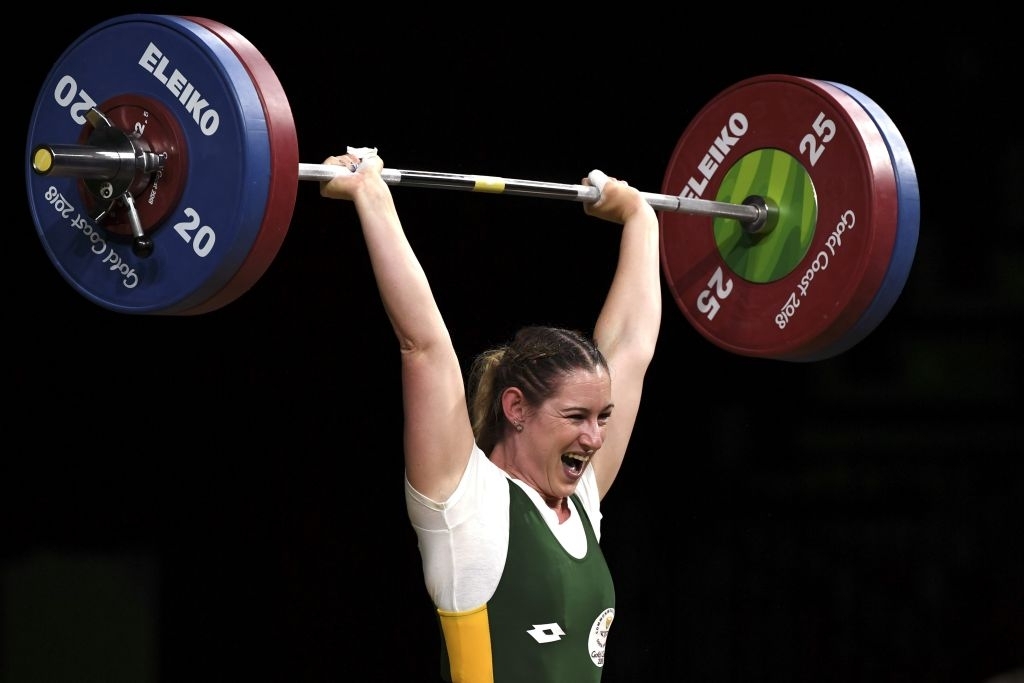The hang muscle snatch is a snatch variation that is mainly used for developing upper body strength for the snatch. However, it has many other benefits such as reinforcing the snatch movement at a slower speed.
So how and why should you use the hang muscle snatch in your training?
Table of Contents
The Different Hang Positions
With five different hang positions, it’s important to specify which hang position the hang muscle snatch falls under.
- High-Hang or Hip
- Mid-Thigh
- Hang or Top of Knee
- Knee
- Hang Below Knee
When I am referring to the hang muscle snatch, I’m specifically referring to the hang or top of the knee position which is the most common hang muscle snatch variation.
How To Perform The Hang Muscle Snatch
The Starting Position
How you set up with the hang position is often going to dictate the success of your lift. Firstly, you must bend over the bar with your hips moving slightly back. Once you reach the top of your knee, this is the starting position for the hang muscle snatch.
But there are little intricacies with this position. Starting with the feet, your bodyweight should be through the middle of your foot. If your weight is too far forward towards your toes, you will struggle to finish the pull.
If your weight is too far onto your heels, you will struggle to push with your legs and will kick the bar forward to accelerate the bar causing a looping motion of the barbell.
When having your body weight in the middle of your foot, your shoulders need to be over the bar. If your knees are pushed forward too far, you will be behind the bar.
Finally, pointing the elbows out with a big chest and tight lats is important for keeping the bar close in the starting position and during the pull.
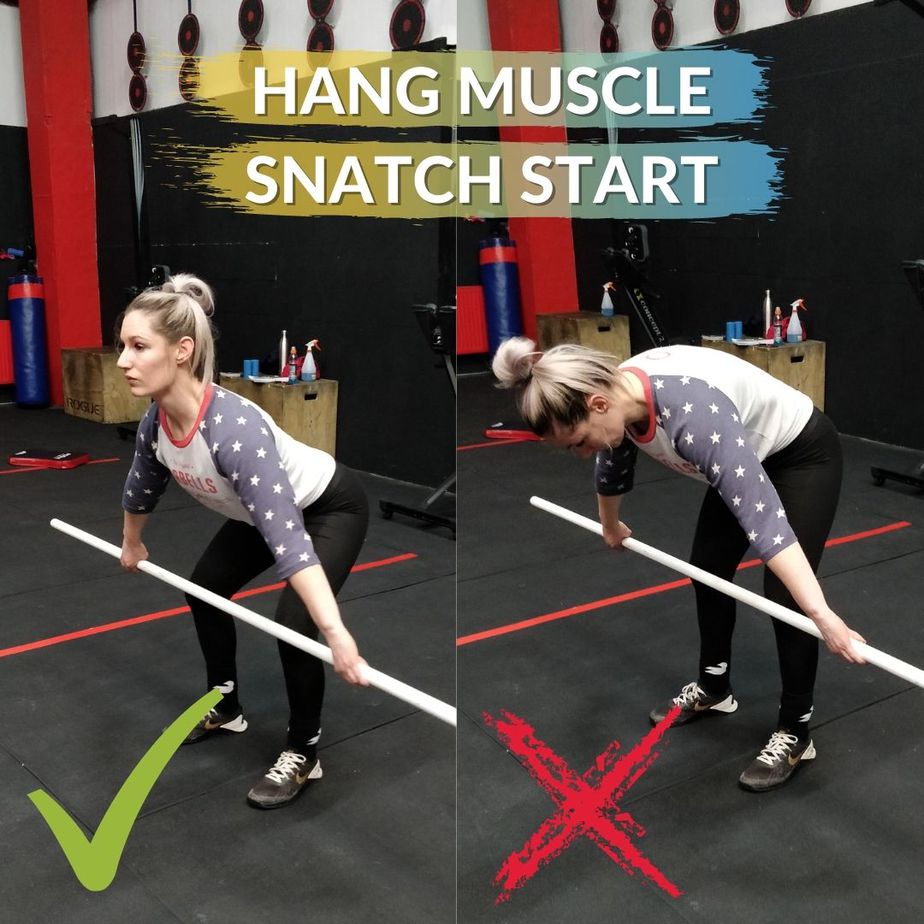
The Pull
To initiate the pull, start by pushing through the legs until you get to a vertical body position. Avoid pulling with your back as this subtle cueing difference can drastically change the bar path.
Pushing with the legs keeps your shoulders and body over the bar whereas pulling with your back instantly puts your body behind the bar. When you are behind the bar before getting to full extension, the only way to go is backward to generate more force.
Staying over the bar allows you to maximize the upward propulsion of the barbell. Once you reach a vertical position, you will extend onto your toes with a big shrug of the shoulders. The barbell should make contact with your hips as it would during a snatch.
Then you will start to pull the bar up as close as you can to the body.
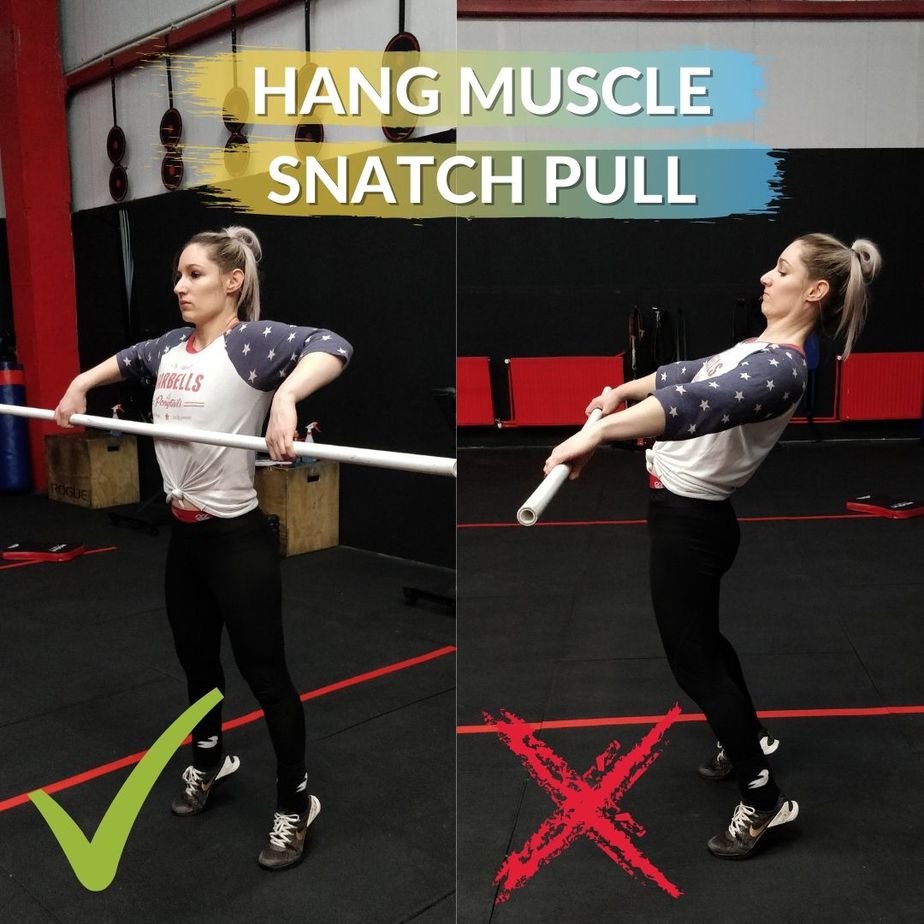
The Catch
As you finish pulling the bar over your head, you will block or punch the arms straight with your upper arms in line with your ears. Your head will be slightly forward which will help lock your shoulders in a stable position.
It’s important not to internally or externally rotate your shoulders in this catch position. This is often mentioned or taught in some Weightlifting circles and is incorrect. Rotating your shoulders backward points your elbows straight down to the floor which can add a lot of stress to the elbows.
Internally rotating the shoulders forward points your elbows too far back and will cause you to either damage your shoulders or lose the bar forward.
Instead, your elbows should sit in between these positions which happens naturally when you catch the bar in a muscle snatch.
Your wrists can do whatever they like in this position. Some athletes like to have them slightly extended in the catch while others like their wrists straight. This will be a personal preference.
Finally, the legs must stay straight throughout the transition from the pull to the catch. This is what defines a lift as a muscle variation. Because you can’t dip back under the bar, a greater emphasis is placed on the upper body to pull the bar to the catch position.
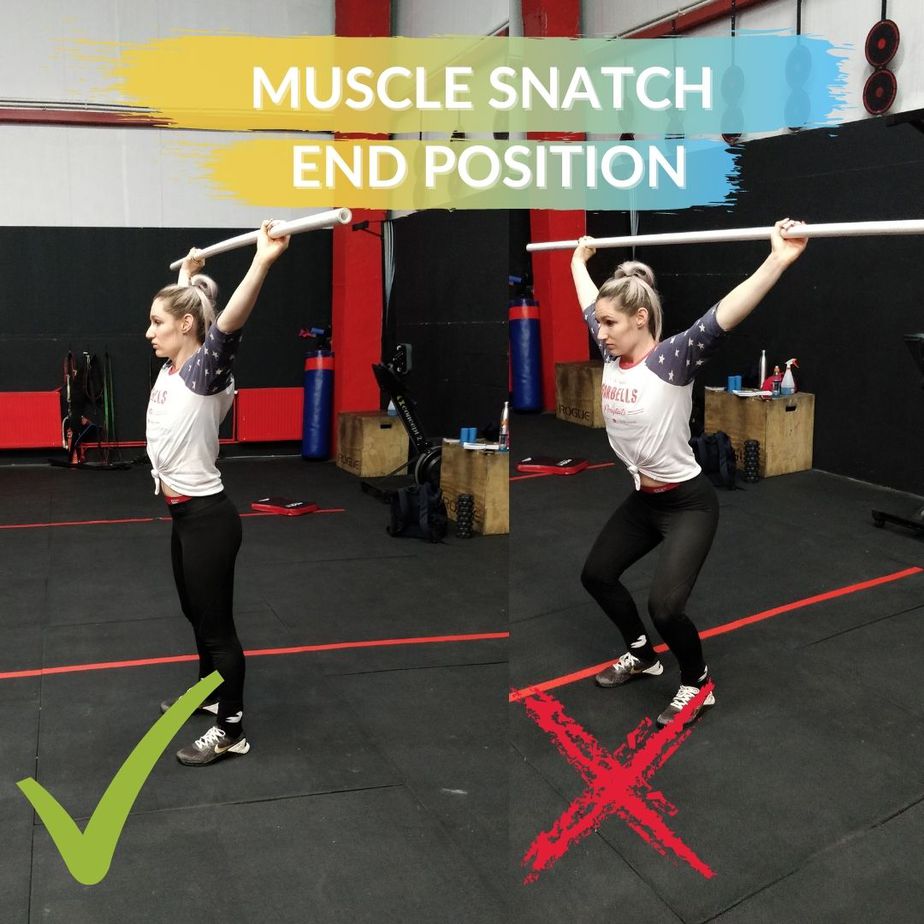
Why Use The Hang Muscle Snatch?
Reinforce Correct Bar Path
The hang muscle snatch slows the movement down and provides immediate feedback about your bar path. Because you need to “muscle it” to the catch position, if the barbell gets kicked out in front, pulling it to the catch position will be near impossible (unless you can front raise a ton).
Reinforces 2nd Pull Mechanics
The 2nd pull is when the barbell passes your knees and travels to your hips. The hang muscle snatch trains the 2nd pull in isolation so you can drill the correct movement.
The hang muscle snatch forces you to finish the pull. When using a power variation, you can get away with not finishing the pull if you have the speed. Because the muscle snatch is slower, if you don’t finish the pull, you won’t have the momentum and speed to get the bar overhead.
Strengthen The Arms And Shoulders
Because you can’t dip back under the bar, it takes extra effort from the arms and shoulders to pull and punch the bar overhead. This makes the hang muscle snatch a specific strength exercise for the snatch.
Further, because you don’t have the momentum generated from the floor such as in a muscle snatch, the hang muscle snatch places an even greater emphasis on the upper body.
Forces You To Keep Position
The hang muscle snatch is limited in the load you can use. For this reason, the focus is on position, not the load being lifted. Sometimes, ego lifting can take over when performing snatch variations so the hang muscle snatch automatically limits this loading for a priority of position.
When To Use The Hang Muscle Snatch
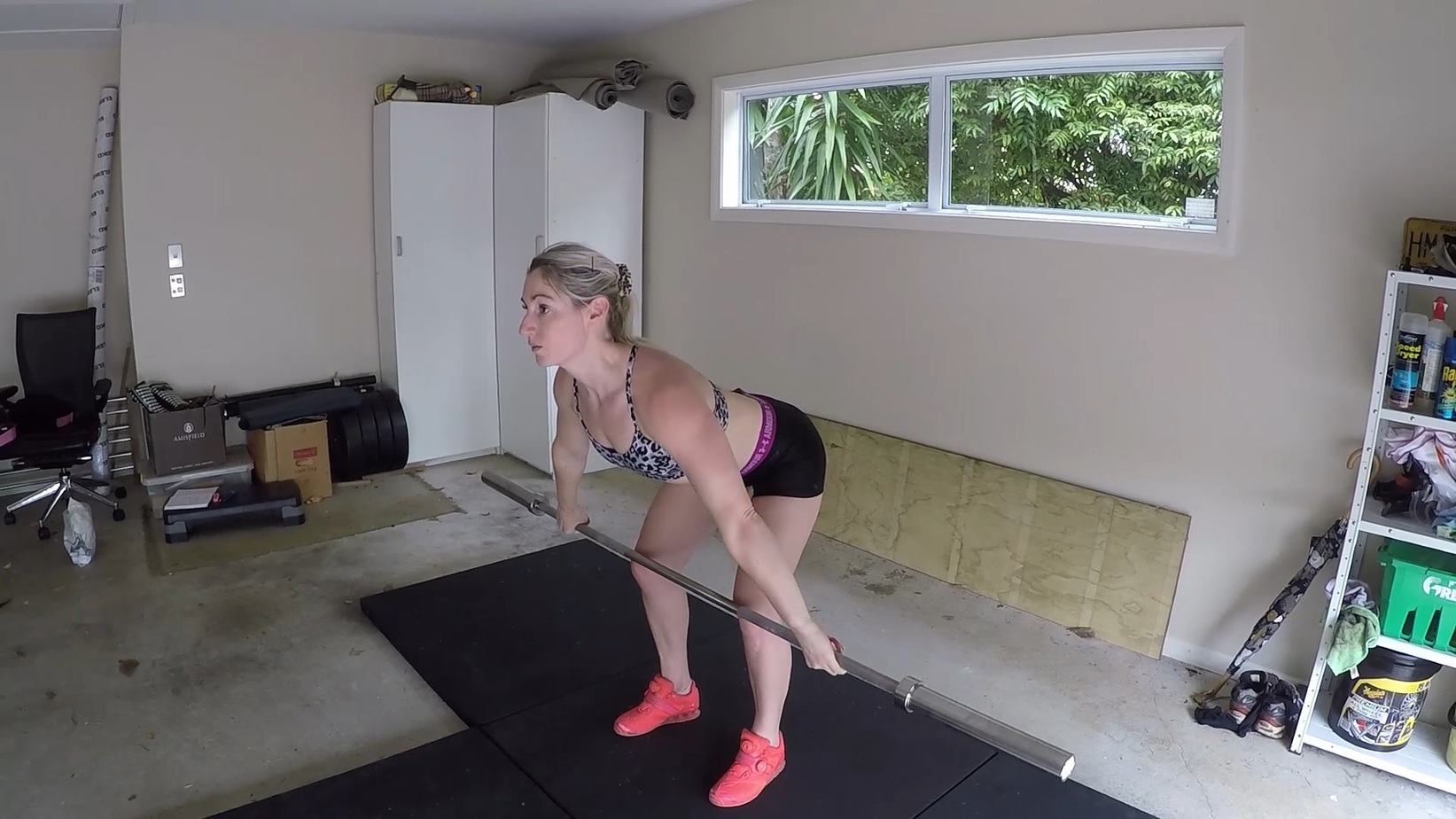
The hang muscle snatch is a great movement to teach a beginner Weightlifter the correct bar path and overall movement of the snatch. It can help them feel safe getting the bar overhead into the catch position since the movement is slower.
It also makes an awesome warm-up for your snatch sessions. The hang muscle snatch can be the first exercise you use when you touch the barbell to prepare the shoulders, arms, and back.
Additionally, the hang muscle snatch is often used far away from competition or directly after competition. When you are closer to competition, you should be performing mainly full and power lifts.
When in an “off-season” period, muscle variations are used to break the monotony of training and limit loading.
How Many Sets and Reps Of The Hang Muscle Snatch?
Generally, the hang muscle snatch is programmed as 4-6 sets of 3-5 reps at 40-50% of your snatch 1RM. I like to program off the snatch as it’s easier for an athlete to remember just a handful of 1RMs and most athletes don’t know their 1RM hang muscle snatch (nor do they need to know).
Hang Muscle Snatch Variations
Different Hang Positions
There are plenty of hang muscle snatch variations with so many different hang positions and even blocks. Some of these will be covered in their own article.
No Hook Grip
The no hook grip variation is to place more stress on the grip and therefore, placing a greater stress on the arms. Holding a snatch with no hook grip is even more challenging than with a clean grip making it a very good grip exercise for Weightlifting.
No Contact
No contact or contact is generally a coach’s preference. However, you can use the no contact variation to place even more emphasis on the arms and upper body as you have no extra momentum from the hip contact.
Pause Or No Pause
I prefer to coach hang lifts with a pause in the hang position to strengthen the position as well as reinforcing the correct position. Sometimes lifters can get “lazy” and find wrong positions as they find the hang position and use it to rebound into the lift making it easier.
The no pause of rebound can be a good variation for more advanced lifters that have the hang position nailed and want to be able to use more weight with the hang lift.

